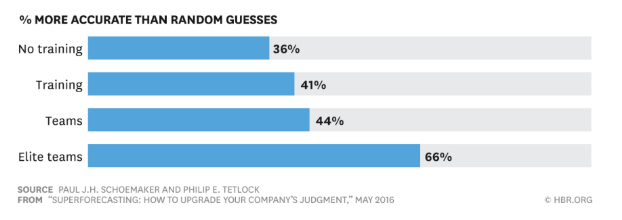3 Calibration
Forecasting skills can be improved! When we forecast, we typically consider a confidence level (exactly like confidence levels in confidence intervals). So how “confident” are we in our guesses?
When evaluating this, we’ll have to consider mean success rate of our forecasts.
If we can get a the same proportion of questions as the confidence level that we are aiming for, then we are “well-calibrated”
We are poorly calibrated:
- if we get a lower proportion than the confidence level (over-confident)
- if we get a higher proportion than the confidence level (under-confident)
Here’s some examples of successful calibration:
With a 1 hr training Phillip Tetlock, a professor at the University of Pennsylvania, improved participants’ forecasts by 14% (relative to a control group) in a year-long geopolitical forecasting competition. Some examples of forecasts that were in the competition: What is the probability the U.S. will sign the Paris Accord?; Will the U.S. deploy ground troops in Syria?; etc. This research was mostly done in the last decade, so it’s only been leveraged a modest amount.
By measuring forecasting performance and putting the most accurate forecasters together on teams, Tetlock was able to assemble teams that beat professional CIA analysts, who had access to classified intel.
Douglas Hubbard found that most people can become calibrated in about 2 hours of training.
3.1 Calibrate yourself!
Your assignment is to complete at least 20 predictions from the “Confidence Intervals” question set at an 80% confidence interval.
Show Mr. Chang your results at the end of class tomorrow (5/10) for credit.
If you are finished, continue working on it. You can feel free to work on a different question set and/or work with a partner/group. Your grade will be based off of your work ethic during this time, otherwise, you will not get a grade.

